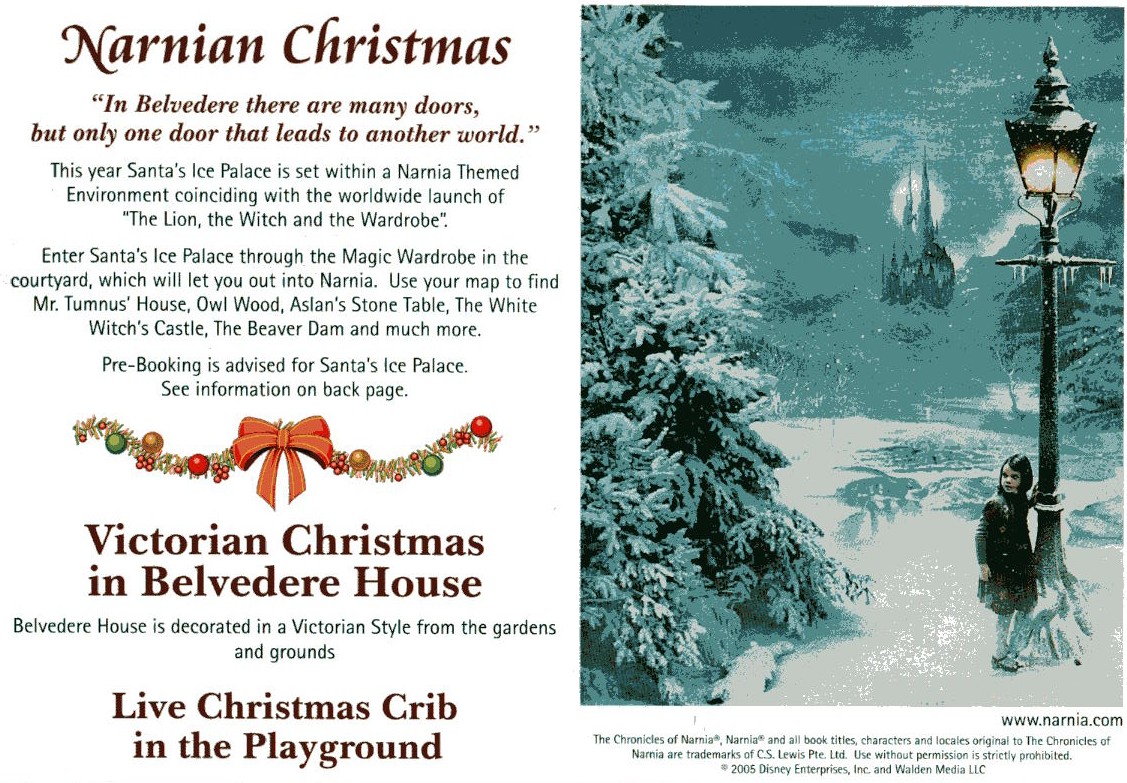A whole slew of Narnia and other film site journalists got the chance of a lifetime: to visit the set of Prince Caspian in Prague. If there was one set that I would have loved to see, it’s clearly The Dancing Lawn, the inspiration for the name of our forums.
Anyway, here we’ll start with our sister site NarniaWeb, where glumPuddle talks a bit about locations and sets.
Locations
I stepped out of the van and shook Ernie Malik’s hand. Ernie is the film’s publicist and is in the process of writing a behind-the-scenes book on the Prince Caspian film. He was our guide through Narnia, and also did a fantastic job arranging interviews with the cast and crew. We got our badges and then he started leading us to the first set. The other writers were talking, but I was looking around, hoping to see some sign of Narnia. For awhile, there was little to be seen but the outside of the soundstages, where I knew the sets must be. Then I caught a glimpse of a full-size lion sculpture. It’s funny looking back on that now, because it felt like a really big moment — but that was just the tip of the iceberg, of course.
We turned left, and I saw that Ernie was leading us to the soundstage where I had seen the artificial trees when we drove in. The moment had come at last. One of the Disney guys smiled and asked me, “Are you ready?” It was a valid question, to be honest. Was I really ready for this? I smiled back and said, “No, I’m not sure I am.” I took a deep breath. Ready or not, I stepped through the door (leaving it open behind me, of course)… and into Narnia…
THE DANCING LAWN (Stage 8)
My first thought (after getting over the initial shock, of course) was that the brown cliff on our right was the exterior of Aslan’s How. But I soon found I was mistaken. There were trees (real and fake) around it with a small clearing in the middle. Everything had a rather damp look. The space was surprisingly small for a forest, but a detailed painting of the background circled the set. I reached over and grabbed a small handful of dirt just to see if it was real (it was, as far as I could tell). The set was clearly under construction. Many of the trees needed work, and the concrete floor was still visible. The crew was in the process of converting the set from a different location in the story…
“This is called the Dancing Lawn,” Ernie said, and I quickly scratched out my first note that it was Aslan’s How. “This is where Caspian, Nikabrik, and some of the other Narnians are talking about how to mount an offensive against Miraz. This is a set that is being re-designed. We already shot a scene here where the four kids have saved Trumpkin, and then they gather around a campfire — probably the beginning of Chapter 4 of the book. And then, Trumpkin proceeds over the next four chapters to narrate what has happened to Narnia over the past 1300 years. The kids disappear, I mean when you read the book, the kids are basically just sitting there listening to the story. If we had adapted the book faithfully the way it is, it wouldn’t be that cinematic. It’s not a very cinematic story.
“They go into the woods and they have a campfire, and then Lucy wakes up and she thinks she hears a voice. And it’s Aslan calling from somewhere. And then she gets up. And we shoot part of that here, and then we cut to the location in New Zealand, and then cut to the location in Poland. So it’s basically three woods — one soundstage, two real areas — that will portray one area in the story.” When I heard that this memorable scene from the book would be in the film, I wanted to shout my joy to the world! It’s a good thing I brought a tape recorder because it was hard to concentrate on the rest of what Ernie said. That’s when I realized that I would have to just focus on getting the story now, and get emotional later.
“The woods that they found just a kilometer over the Czech border are unbelievable,” Ernie continued. “These rock formations are basically photographs and renditions of what really exists in eastern Czech Republic and western Poland. They’re surreal. It’s amazing how mother-nature sculpted these things. This location is pretty high up, easily one thousand feet above sea level where we shot in Poland, but at one point you have to ask yourself ‘was this underwater?'”
The advantage of an interior set is that the crew doesn’t have to worry about weather, and it is a much more controlled environment. “If you build something and make it work in an interior, you certainly try to do that,” Ernie said. “This whole area right here was all grass. And we water it, it’s living. It’s a living breathing forest. And when you create a forest, along with that come insects.”
STABLES (Stage 7)
Our next stop wasn’t far away. When I walked in, I was not able to guess where we were, because there was more construction going on here than in the Dancing Lawn. It was all wood that was still waiting to be painted, and I couldn’t guess what shape it would eventually be. Ernie told us that weeks before, a set called “The Great Hall” had been here.
“[The Great Hall] is where Miraz has his coronation and they put the crown on his head,” Ernie said. “There are 20 lords in the scene plus Miraz. Four of them have dialogue, the rest are just extras. The thrones that they manufactured for the scene are fabulous. It was all done by Kerrie Brown, our set decorator who was worked for Roger Ford for 15 years. They’ve done 11 movies together.”
Ernie then gave us a little summary of the rest of the shooting schedule: “We go back and forth. We’re out in northwest Czech Republic right now, we’re there all this week. We’re supposed to be back here shooting next Monday for the next three weeks. Then we go to Slovenia, that’s going to be the river-god sequence, which is a big climactic scene in the book. That bridge is being built. They’ve had to re-route the flow of a river to do that, with the approval of the Slovenian government. Then we go back to Usti and do the battle, and then we come back here and finish up. We finish sometime in August.”
“When we did the first movie,” Ernie continued, “We had eight soundstages in Auckland, New Zealand. Basically they were warehouses, sheds. So when it rains… that’s always good for sound (laughter). That could very well be why Tony Johnson got nominated for Sound Mixing on the first movie, because he managed to mix all of that stuff out. We shot that in winter, and winter in Auckland is rain.” On the first film, they didn’t do much exterior shooting. They had a few shots in real snow, the White Witch’s Camp, Aslan’s Camp, and the battle, but the rest of the film was mostly done on sound stages. “This is the opposite,” Ernie said. “We have one-third interior soundstages, two-thirds exteriors. And shooting exteriors, no matter where you are on the planet, means you have to deal with weather.”
Read the rest of this amazing report at NarniaWeb
And stay tuned to NarniaFans.com as we bring you coverage from all corners of the Narnia world.


